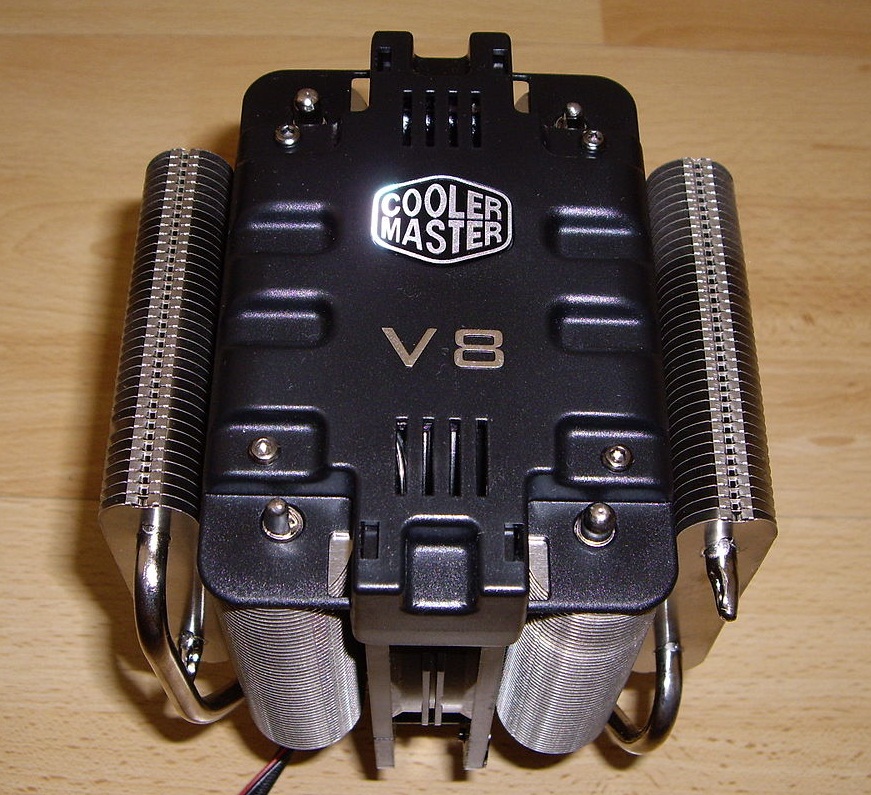Air Cooling on:
[Wikipedia]
[Google]
[Amazon]

 Air cooling is a method of dissipating
Air cooling is a method of dissipating
ericsson.net – Forced air cooling of DC/DC power modules at high altitude, Design Note 025
table "Cooling efficiency"

 Air cooling is a method of dissipating
Air cooling is a method of dissipating heat
In thermodynamics, heat is energy in transfer between a thermodynamic system and its surroundings by such mechanisms as thermal conduction, electromagnetic radiation, and friction, which are microscopic in nature, involving sub-atomic, ato ...
. It works by expanding the surface area or increasing the flow of air over the object to be cooled, or both. An example of the former is to add cooling fins to the surface of the object, either by making them integral or by attaching them tightly to the object's surface (to ensure efficient heat transfer). In the case of the latter, it is done by using a fan blowing air into or onto the object one wants to cool. The addition of fins to a heat sink
A heat sink (also commonly spelled heatsink) is a passive heat exchanger that transfers the heat generated by an electronic or a mechanical device to a fluid medium, often air or a liquid coolant, where it is thermal management (electronics), ...
increases its total surface area, resulting in greater cooling effectiveness. There are two types of cooling pads that can be used for air cooling: one is the honeycomb design and another one is excelsior
Excelsior may refer to:
Arts and entertainment Literature and poetry
* "Excelsior" (Longfellow), an 1841 poem by Henry Wadsworth Longfellow
* "Excelsior", an 1877 picture book in verse by Bret Harte, published as an advertisement for the Sa ...
.
In all cases, the air has to be cooler than the object or surface from which it is expected to remove heat. This is due to the second law of thermodynamics
The second law of thermodynamics is a physical law based on Universal (metaphysics), universal empirical observation concerning heat and Energy transformation, energy interconversions. A simple statement of the law is that heat always flows spont ...
, which states that heat will only move spontaneously from a hot reservoir (the heat sink) to a cold reservoir (the air).
Derating at high altitude
When operating in an environment with lower air pressure like high altitude or airplane cabins, the cooling capacity has to be derated compared to that of sea level. A rule-of-thumb formula to note: 1 – (h/17500) = derating factor. Where ''h'' is the height over sea level in meters. And the result is the factor that should be multiplied with the cooling capacity in to get the cooling capacity at the specified height over sea level.table "Cooling efficiency"
See also
*Computer cooling
Computer cooling is required to remove the waste heat produced by computer components, to keep components within permissible operating temperature limits. Components that are susceptible to temporary malfunction or permanent failure if overhe ...
* Computer fan
* Deep water air cooling
* Evaporative cooling
An evaporative cooler (also known as evaporative air conditioner, swamp cooler, swamp box, desert cooler and wet air cooler) is a device that cools air through the evaporation of water. Evaporative cooling differs from other air conditioning sy ...
* Water cooling
file:KKP Auslauf.jpg, Cooling tower and water discharge of a nuclear power plant
Water cooling is a method of heat removal from components and industrial equipment. Evaporative cooling using water is often more efficient than air cooling. Water i ...
* Oil cooling
* Heat pipe
A heat pipe is a heat-transfer device that employs phase transition to transfer heat between two solid interfaces.
At the hot interface of a heat pipe, a volatile liquid in contact with a thermally conductive solid surface turns into a vapor ...
cooling
* Peltier cooling
* Heater core
References
Further reading
* *P V Lamarque, "The design of cooling fins for Motorcycle Engines", Report of the Automobile Research Committee, Institution of Automobile Engineers Magazine, March 1943 issue, and also in "The Institution of Automobile Engineers Proceedings, Session 1942-1943, pp 99-134 and 309-312. *Julius Mackerle, "Air-Cooled Motor Engines". Charles Griffin & Company Ltd., London 1972 *Anish Gokhale et al.: "Optimization of Engine Cooling through Conjugate Heat Transfer Simulation and Analysis of Fins"; SAE Paper 2012-32-0054 {{Automotive engine , collapsed Engine cooling systems Cooling technology Computer hardware cooling